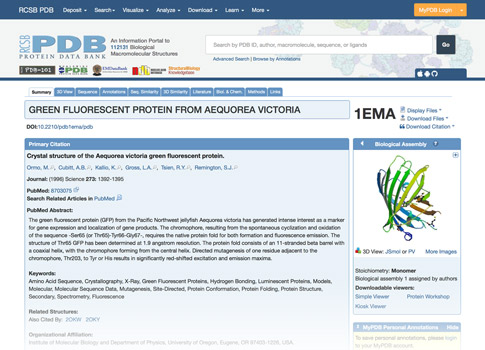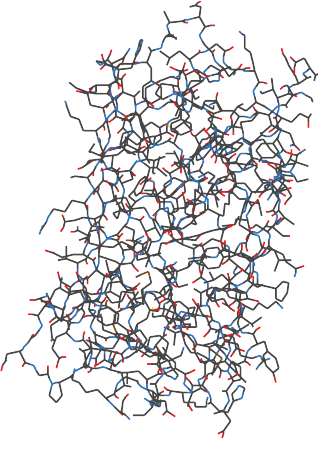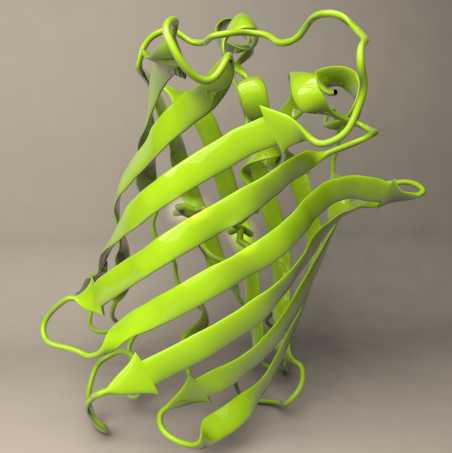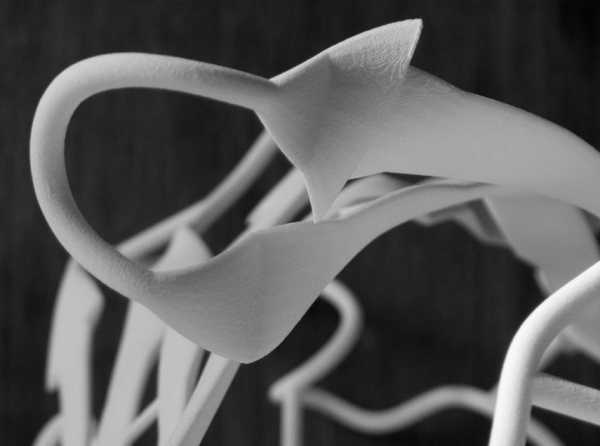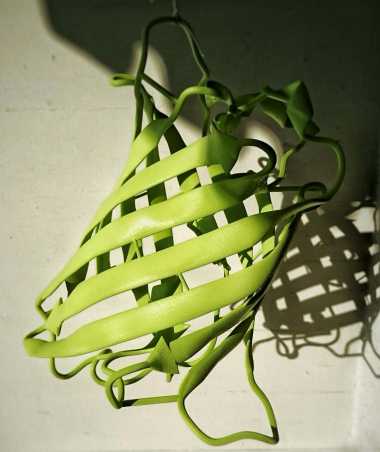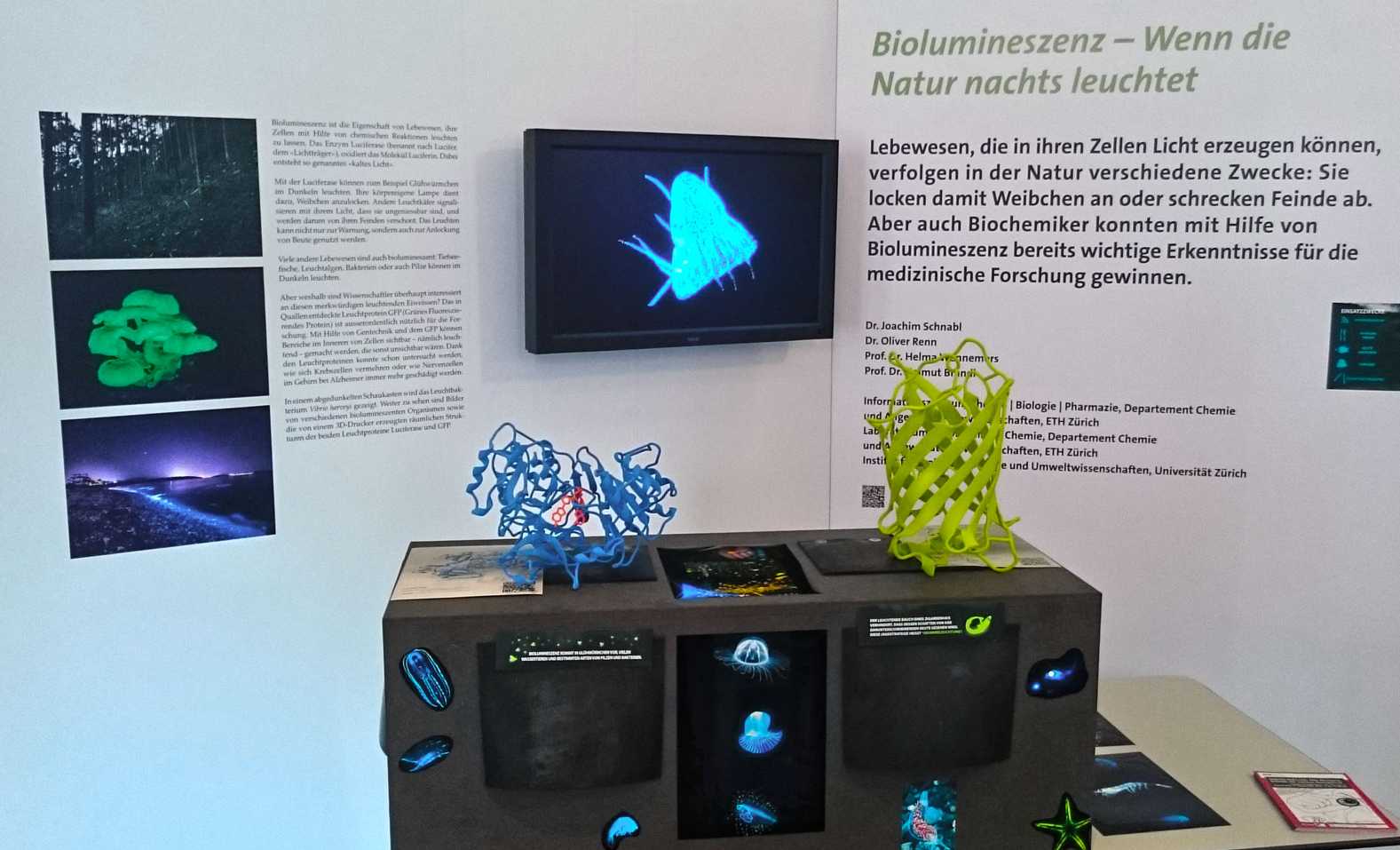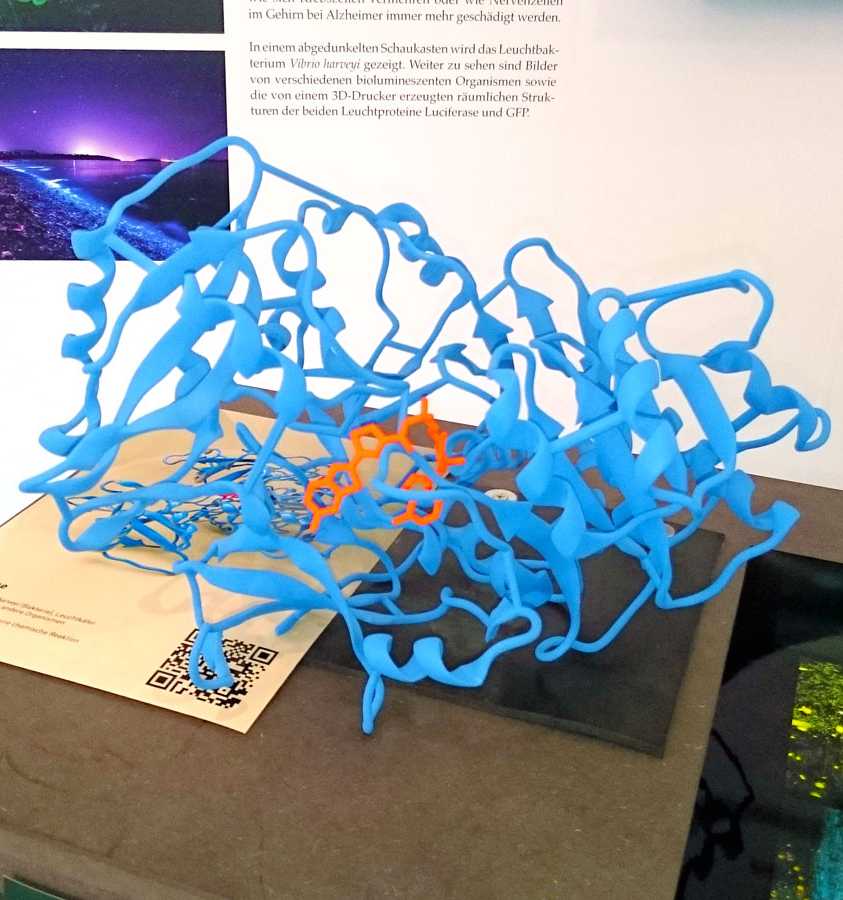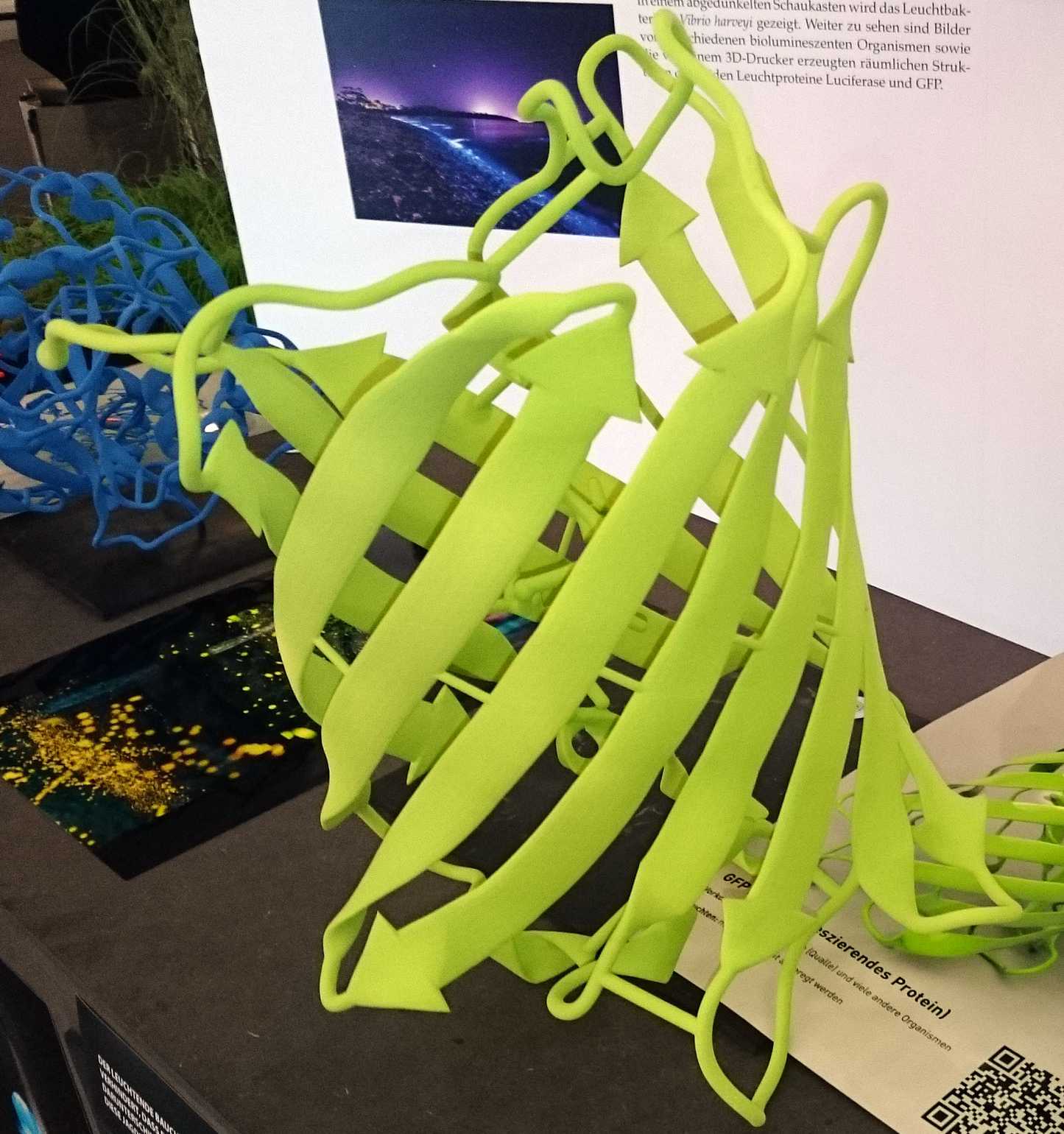The D-CHAB at Scientifica
- D-CHAB
- Highlights
The D-CHAB’s bioluminescence booth attracted many visitors of Scientifica 2015.
The weekend of Scientifica 2015 was a great success in terms of visitor numbers: more than 25’000 people interested in science wandered the premises of the ETH and University of Zürich. The D-CHAB was also present with an exhibition stand about bioluminescence, the reason why some plants and animals glow in the dark.
Visitors of the D-CHAB’s bioluminescence booth at the external page Scientifica 2015 could peek into a black box which harbored the marine bacterium Vibrio harveyi. Inside the shaded box, a bluish green glow could be seen from Erlenmeyer flasks containing the living bacteria. The cells of Vibrio harveyi are free-swimming and they glow when many of its kind are nearby. Some marine animals like corals, oysters, prawns, octopi, or seahorses can accommodate these bacteria inside their organs. The organs are then luminescent exhibiting a fascinating, yet sometimes even intimidating glow. Some animals use this glow to attract their prey. Others, like brittle stars, sacrifice one of their glowing arms to an approaching predator in order to escape. Still, many reasons for the use of bioluminescence in animals remain to be discovered.
Scientifica 2015
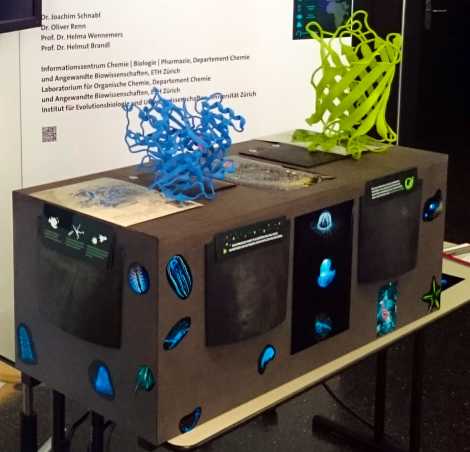
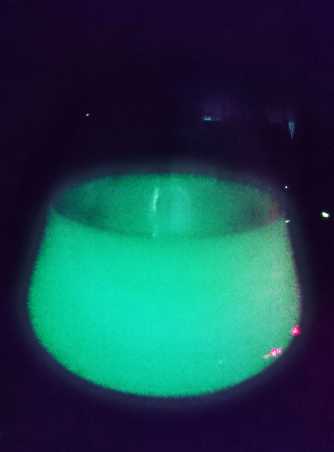
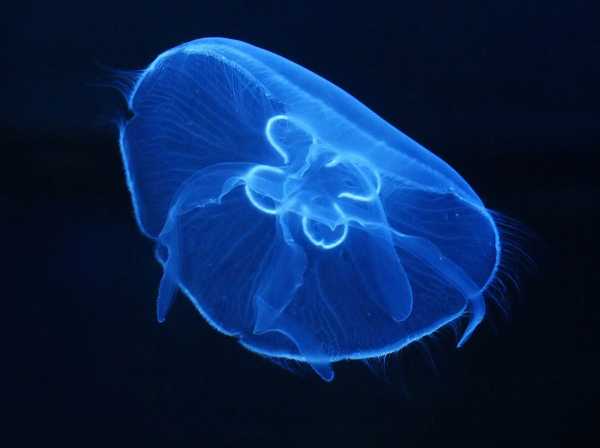
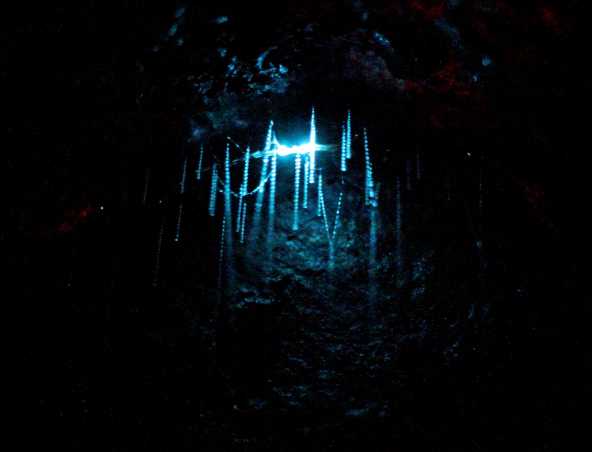
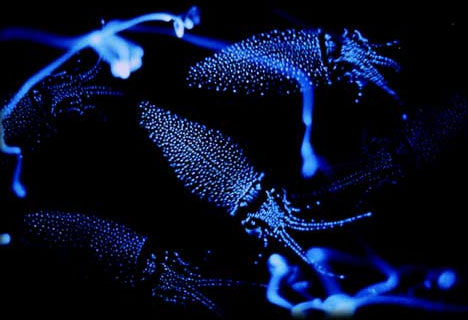
Also in our close neighborhood bioluminescence can be found: At the right time of the year in a very dark night, fungi thriving on moldering wood or glow worms can be seen in certain places all over Switzerland. Bioluminescent organisms glow because they contain an enzyme which is able to oxidize a pigment molecule. This chemical reaction produces the light we call bioluminescence. The light is either directly emitted from organisms containing the protein luciferase or indirectly visible by excitement of another protein like the green fluorescent protein (GFP). The molecular models of GFP and luciferase were 3D printed and put on display at the booth for everyone to touch. Both proteins are extensively used in biotechnology for many applications such as marking cetrain compartments of cells, or studing cell death.
In summary, the bioluminescence display of the D-CHAB’s booth was a great success: Many interested children and grown-ups took a look at living luminous bacteria, discussed the origin and meaning of bioluminescence, touched the proteins that make nature glow, and admired the photographs and movies displaying bioluminescence that is found all over our planet.
3D Printed Molecular Models
GFP: From Atomic Coordinates to a 3D Printed Protein
